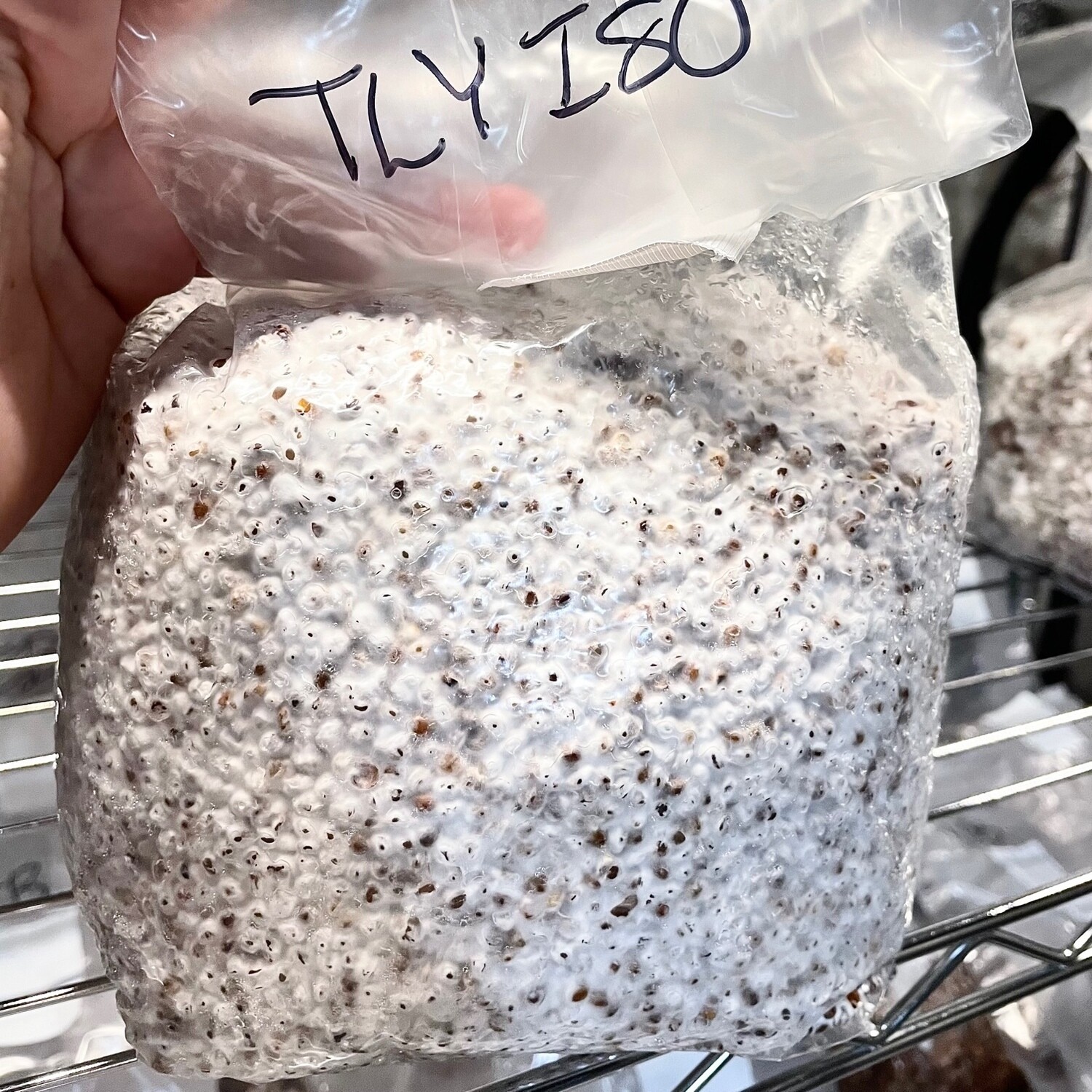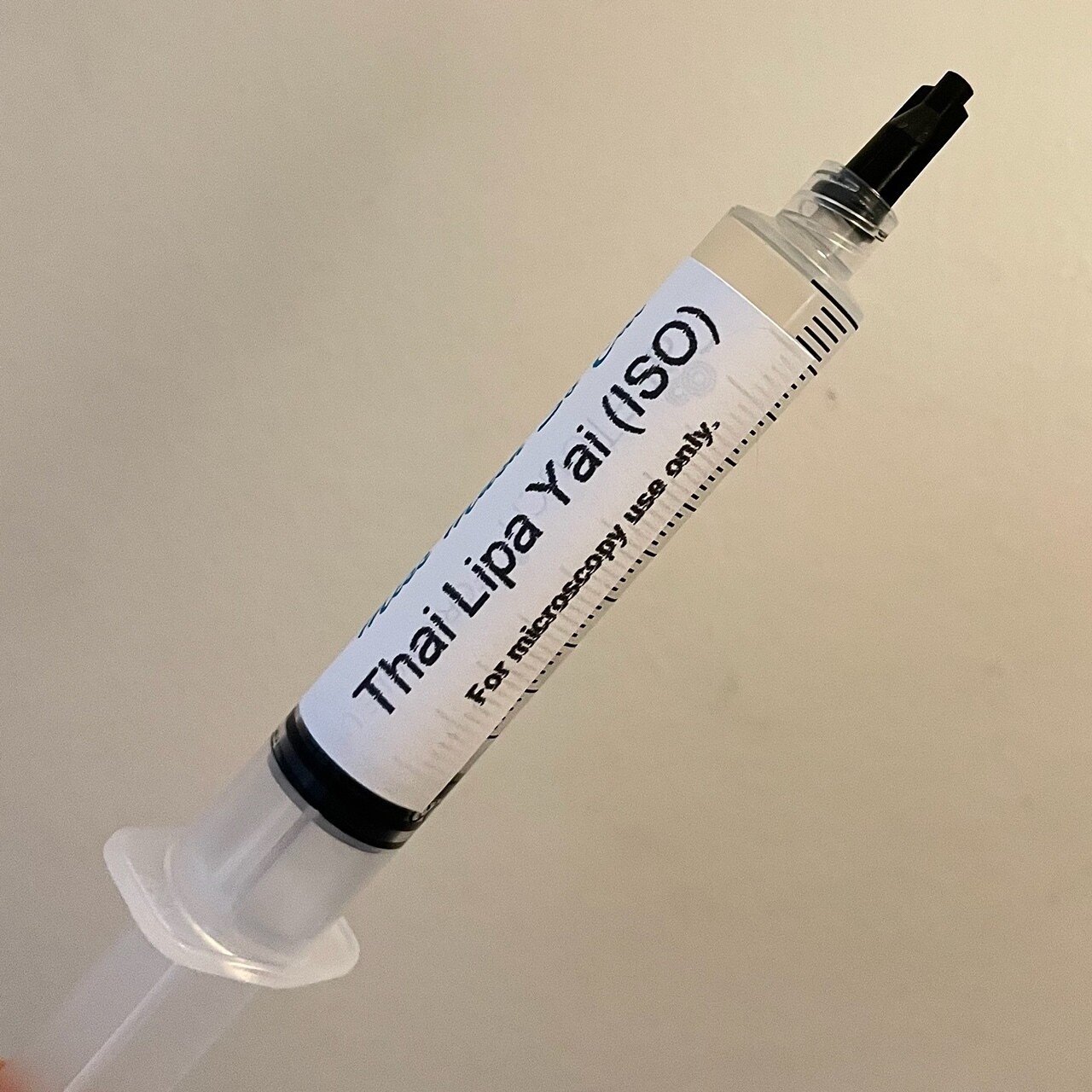Hey there food lovers! Ever heard of Thai Lipa Yai? If you're a fan of sweet treats, you're about to discover one of Thailand's most beloved desserts that has been captivating taste buds for generations. This sticky rice cake is more than just a snack; it's a cultural treasure that reflects the country's rich culinary heritage. Get ready to dive into a world of flavors and textures that will leave you craving for more.
Thai Lipa Yai, often referred to as "sticky rice cake," is a dessert that perfectly balances sweetness, chewiness, and aroma. It's the kind of treat that brings people together, whether it's during festivals, family gatherings, or casual get-togethers. So, why is this dessert so special? Stick around, because we're about to spill all the tea on what makes Thai Lipa Yai a must-try delicacy.
Now, if you're anything like me, you love learning about the stories behind the food you eat. Thai Lipa Yai isn't just about the taste; it's about the traditions, the ingredients, and the passion that goes into making it. In this article, we'll explore everything you need to know about this iconic dessert, from its origins to how you can make it at home. Let's get started!
What Exactly is Thai Lipa Yai?
Thai Lipa Yai, or sticky rice cake, is a traditional Thai dessert made from glutinous rice, coconut milk, and sugar. It's often wrapped in banana leaves, which not only adds to its unique aroma but also makes it super convenient to carry around. The texture is what sets it apart—soft, chewy, and sticky, with a creamy coconut flavor that's absolutely irresistible.
This dessert is a staple in Thai cuisine and is enjoyed by people of all ages. Whether you're wandering through bustling markets in Bangkok or visiting a quiet village in the countryside, chances are you'll come across Thai Lipa Yai. It's that popular!
Origins and History of Thai Lipa Yai
So, where did this amazing dessert come from? Thai Lipa Yai has its roots in Thailand's rich agricultural history. Glutinous rice, one of the main ingredients, has been cultivated in the region for centuries. In fact, rice is more than just a crop; it's a symbol of life and prosperity in Thai culture.
Traditionally, Thai Lipa Yai was prepared during special occasions like weddings, religious ceremonies, and festivals. Over time, it became a part of everyday life, and now you can find it almost anywhere in Thailand. The recipe has been passed down through generations, with each family adding their own twist to the classic formula.
How Thai Lipa Yai Became a Cultural Icon
Thai Lipa Yai isn't just a dessert; it's a reflection of Thailand's cultural identity. The use of natural ingredients like coconut milk and banana leaves ties it closely to the country's agricultural traditions. Plus, the communal aspect of sharing this treat during gatherings reinforces the importance of family and community in Thai culture.
Fun fact: In some parts of Thailand, Thai Lipa Yai is believed to bring good luck and prosperity. That's why it's often given as a gift during special occasions. Who knew a simple dessert could carry so much meaning?
Key Ingredients of Thai Lipa Yai
Let's talk ingredients, because they're what make Thai Lipa Yai so darn good. Here's a quick rundown of the essentials:
- Glutinous Rice: The star of the show! This sticky rice gives the dessert its signature texture.
- Coconut Milk: Adds richness and creaminess to the mix. Trust me, you don't want to skip this step.
- Sugar: Balances the flavors and brings out the sweetness.
- Salt: A pinch of salt enhances the overall taste, making it even more delicious.
- Banana Leaves: Used for wrapping, these leaves impart a subtle aroma and keep the dessert fresh.
These ingredients might sound simple, but when combined, they create a flavor profile that's truly magical. Plus, they're all-natural and packed with goodness.
How to Make Thai Lipa Yai at Home
Ready to try your hand at making Thai Lipa Yai? It's easier than you think! Here's a step-by-step guide to help you recreate this delicious dessert in your own kitchen:
What You'll Need
- 1 cup glutinous rice
- 1 cup coconut milk
- 1/4 cup sugar
- A pinch of salt
- Fresh banana leaves (optional)
The Process
Step one: Soak the glutinous rice in water for at least 4 hours, or overnight if you have the time. This helps it cook evenly and gives it that perfect chewy texture.
Step two: Drain the rice and steam it for about 20-25 minutes until it's cooked through. While it's steaming, mix the coconut milk, sugar, and salt in a saucepan over medium heat until the sugar dissolves.
Step three: Once the rice is cooked, transfer it to a bowl and pour the coconut milk mixture over it. Mix everything together until the rice absorbs all the liquid. Let it cool for a bit before wrapping it in banana leaves.
Step four: If you're using banana leaves, cut them into squares and wrap the rice mixture tightly. You can tie the leaves with string or use clips to keep them secure. Your Thai Lipa Yai is now ready to serve!
Health Benefits of Thai Lipa Yai
Now, I know what you're thinking—how can a dessert be healthy? Well, Thai Lipa Yai actually has some surprising health benefits. Let's break it down:
- Glutinous Rice: Packed with carbohydrates, which provide energy for your body.
- Coconut Milk: Rich in healthy fats and essential vitamins like vitamin C and E.
- Banana Leaves: Contain antioxidants and have anti-inflammatory properties.
Of course, moderation is key. While Thai Lipa Yai is a healthier dessert option compared to some others, it's still important to enjoy it in balance with a nutritious diet.
Where to Find the Best Thai Lipa Yai
If you're visiting Thailand, you're in for a treat (pun intended). You can find Thai Lipa Yai almost everywhere, from street vendors to high-end restaurants. Here are some of the best places to try it:
- Local Markets: Head to night markets or floating markets for an authentic experience.
- Street Stalls: These are often the most affordable and delicious options.
- Restaurants: Some upscale Thai restaurants offer their own take on Thai Lipa Yai, with gourmet twists and presentation.
Pro tip: Ask locals for recommendations. They'll usually point you in the direction of the best spots!
Tips for Enjoying Thai Lipa Yai
Alright, you've got your hands on some Thai Lipa Yai. Now what? Here are a few tips to enhance your enjoyment:
- Pair it with a cold drink like Thai iced tea or lemonade for the perfect balance of flavors.
- If you're making it at home, experiment with different fillings like mango or durian for a unique twist.
- Store leftovers in the fridge and reheat them briefly in the microwave to restore the sticky texture.
Remember, the key to enjoying Thai Lipa Yai is to savor every bite. It's not just about the taste; it's about the experience and the memories it creates.
Thai Lipa Yai Around the World
Believe it or not, Thai Lipa Yai has made its way beyond Thailand's borders. Thanks to globalization and the growing popularity of Thai cuisine, you can now find this dessert in many countries around the world. From Thai restaurants in New York to food festivals in London, people everywhere are falling in love with this sticky rice cake.
Why do you think it's so popular? Well, it's a combination of factors. The flavors are unique yet comforting, the texture is addictive, and the presentation is simply beautiful. Plus, it's a great conversation starter. Who doesn't love talking about food, right?
Adaptations and Variations
As Thai Lipa Yai gains popularity worldwide, chefs are putting their own spin on it. Some add chocolate or matcha for a modern twist, while others incorporate local ingredients to create fusion dishes. These adaptations not only keep the dessert fresh and exciting but also introduce it to new audiences.
Final Thoughts
There you have it, folks! Everything you need to know about Thai Lipa Yai, from its origins to how you can make it at home. This dessert is more than just food; it's a celebration of culture, tradition, and flavor. Whether you're a seasoned traveler or a home cook looking for new recipes, Thai Lipa Yai is definitely worth trying.
So, what are you waiting for? Head out and grab some Thai Lipa Yai, or better yet, make it yourself. Don't forget to share your experience with us in the comments below. And if you loved this article, feel free to share it with your friends and family. Let's spread the love for this amazing dessert!
Table of Contents
- What Exactly is Thai Lipa Yai?
- Origins and History of Thai Lipa Yai
- Key Ingredients of Thai Lipa Yai
- How to Make Thai Lipa Yai at Home
- Health Benefits of Thai Lipa Yai
- Where to Find the Best Thai Lipa Yai
- Tips for Enjoying Thai Lipa Yai
- Thai Lipa Yai Around the World
- Final Thoughts
References:
- Thai Ministry of Culture
- World Food Encyclopedia
- Traditional Thai Recipes



Detail Author:
- Name : Dr. Arlo Durgan II
- Username : qstamm
- Email : edmond.pouros@gmail.com
- Birthdate : 1976-05-15
- Address : 9594 Maud Spurs Suite 113 South Carminebury, IN 17728
- Phone : 678-612-9757
- Company : Reichert PLC
- Job : Ship Pilot
- Bio : Omnis consequuntur sint quis qui suscipit. Commodi quia qui est sed quia. Qui quos voluptas libero nihil itaque aliquid ipsam. Et necessitatibus et error ut pariatur quidem qui.
Socials
twitter:
- url : https://twitter.com/janelleflatley
- username : janelleflatley
- bio : Qui non ducimus ea nihil rerum fugiat. Quo sunt est quaerat ut. Quis molestiae repudiandae eos debitis unde perferendis veniam.
- followers : 3107
- following : 2005
instagram:
- url : https://instagram.com/flatleyj
- username : flatleyj
- bio : Reiciendis minus odio ab placeat non. Laudantium eaque numquam in sit illum provident aut est.
- followers : 4351
- following : 362
tiktok:
- url : https://tiktok.com/@flatleyj
- username : flatleyj
- bio : Sequi cupiditate ex et sed eligendi et.
- followers : 1059
- following : 1163
facebook:
- url : https://facebook.com/jflatley
- username : jflatley
- bio : Illum est et rem delectus quidem cum officia. Odit velit eius commodi et eum.
- followers : 1837
- following : 781